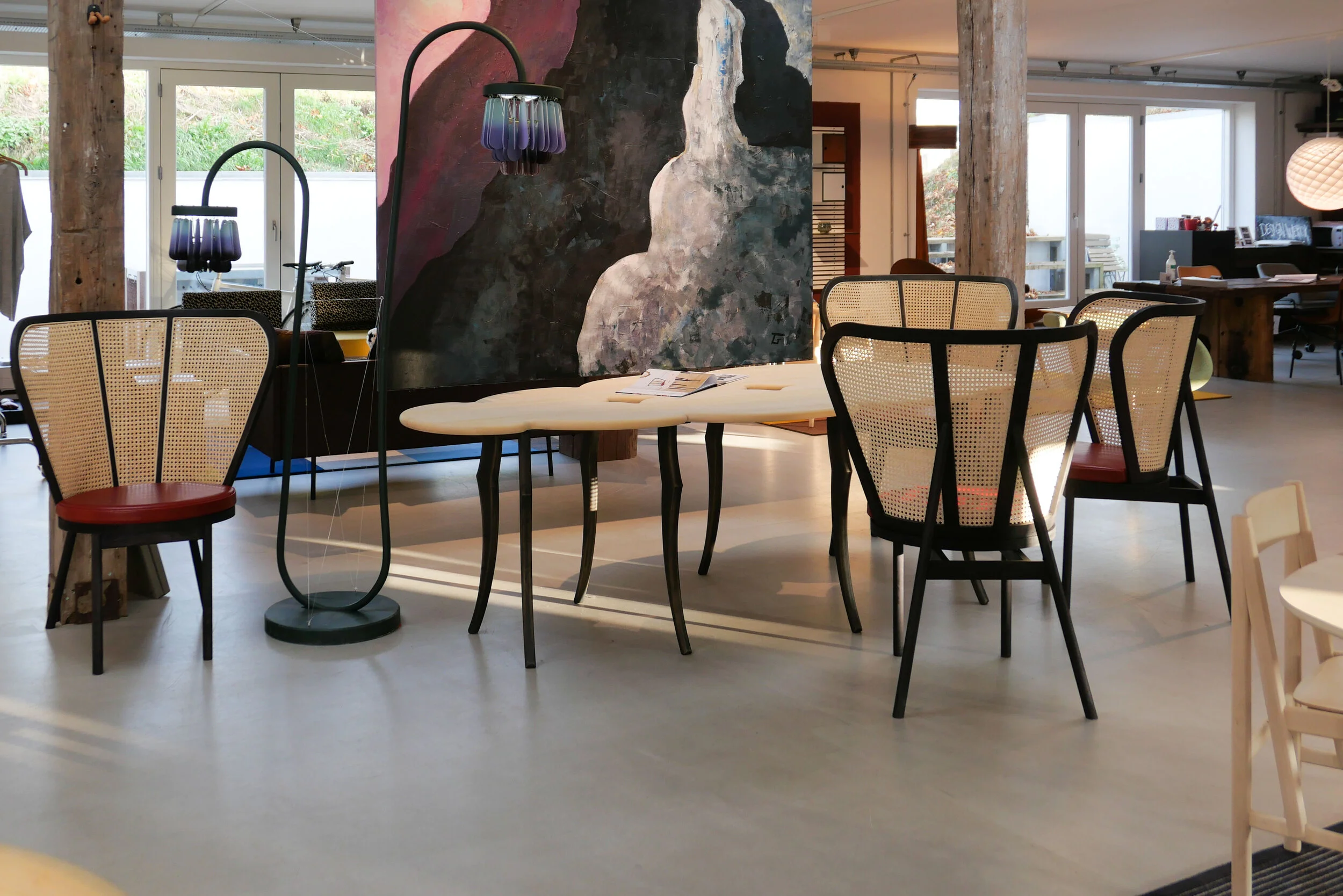Skud på stammen at the Design Werck gallery
/Bord dæk dig - en eventyrlig historie / Table deck yourself - an adventure from fairy tales
An exhibition of furniture with tables and chairs by young cabinetmakers from Snedkernes Uddannelser and with lighting by students from the glass school of EUC Nordvestsjælland in Holbæk.
All the designs were inspired by traditional fairy tales.
The title of the exhibition - Bord dæk dig or Table Set Yourself - is from a story by Jacob and Wilhelm Grimm about three brothers who are sent off to make their fortunes as apprentices and about the gifts they are given by their masters when they finish their training …. so more than appropriate for the theme for an exhibition by young furniture makers.
In the tale, one of the young apprentices is given a table by his master that, on command, sets or lays itself with a magic feast. The table was carried on the back of the apprentice so the table here is on a version of trestles and the top is made from many layers of veneer that must symbolise potential new layers as the table 'sets itself'.
The inspiration for the other tables were four tales from Hans Christian Andersen …...
Thumbelina was a girl who was so small that she was carried off by a toad and captured by a beetle but escaped on the back of a swallow and that tale inspired a table shaped like a beetle that is supported on insect-like legs and with chairs like giant insect or butterfly wings.
The Top and the Ball, also by Hans Christian Andersen, is a tale of love and loss and rejection and the complicated inlay of the top reflects the pattern of a satin ball that became lost and faded.
The Little Match Girl was caught out in a snow storm, and struck three of her matches for light and warmth and this has inspired the brilliant legs of the small tables with tops like match boxes with three of the four legs like used and burnt matches and the fourth match unused.
Klods-Hans …. Hans the Blockhead - seems to me to be a rather more obscure story that is less easy to interpret. it is the tale of three brothers, two of whom are sent off on horseback by their father to win the hand of the princess with fine wit and fine words and the blockhead son follows behind on a goat and collects on the way a dead bird and rank rubbish as gifts for the princess. The chairs are inspired by the goat but the table with its staggered ends and sliding extension leaves? …. is this the crenellations of the royal castle?
This is an exhibition about the imagination of the designers whose inventions are realised by cabinetmakers with the technical skills required to produce furniture of this quality.
Photographs for the catalogue were taken at the fairy-tale castle of Jægerspris Slot on Sjælland.
note:
I think that Skud på stammen can be translated as shoot or bud on the stem or tree trunk. It’s like the English phrase about mighty oaks that from little acorns grow but implies new growth or the new branch on the tree rather than a completely new tree so the relationship between the apprentice and the master.
Design Werck as a venue for the exhibition was planned for the Spring but it had to be postponed because of the lockdown.
Actually, it is a great show for this time of year, in the build up to Christmas, in part because of the fairy tale theme but also because the Christmas season is when, for Danes, the dining table and food becomes such an important part of celebrations with friends and family.
more photographs of the furniture and lights
the exhibition opened on 6 November 2020
at Design Werck, Krudløbsvej 12, 1439 København
Design Werck
NEXT Uddannelse
note: Design Werck does not open on Mondays or Tuesdays




